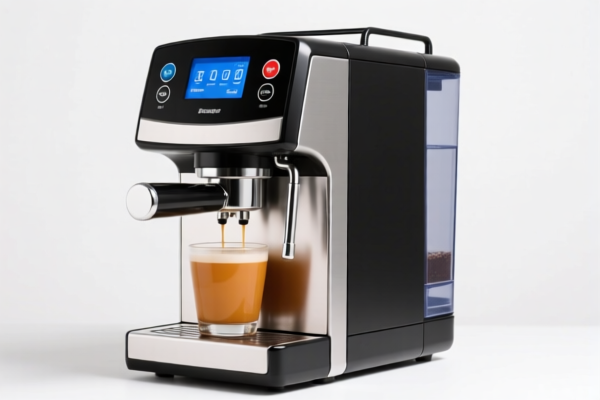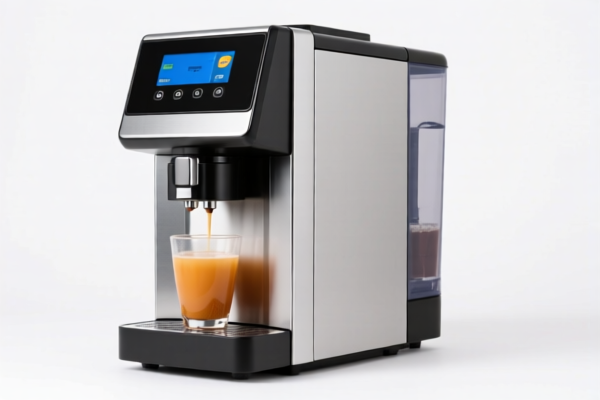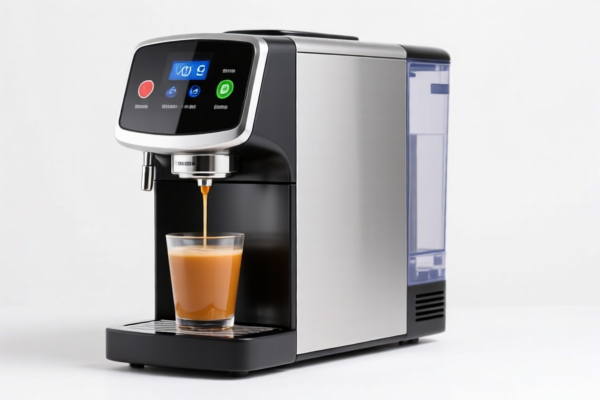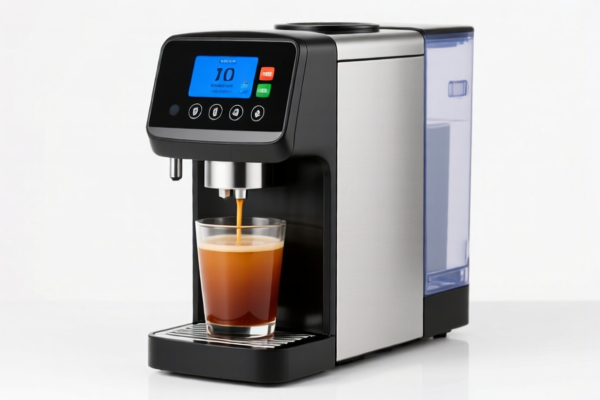| HS Code | Official Doc | Tariff Rate | Origin | Destination | Effective Date |
|---|---|---|---|---|---|
| 8476210000 | Doc | 55.0% | CN | US | 2025-05-12 |
| 8476290000 | Doc | 55.0% | CN | US | 2025-05-12 |
| 8422309110 | Doc | 55.0% | CN | US | 2025-05-12 |
| 8422309110 | Doc | 55.0% | CN | US | 2025-05-12 |
| 8543906500 | Doc | 55.0% | CN | US | 2025-05-12 |
| 8543906800 | Doc | 55.0% | CN | US | 2025-05-12 |




Beverage Machine
A beverage machine is an automated device designed to dispense beverages, typically after a user inserts currency or uses a payment method. These machines range in complexity from simple vending machines offering pre-bottled drinks to sophisticated systems preparing customized drinks on demand.
Materials & Construction
Beverage machines are constructed from a variety of materials, chosen for durability, hygiene, and temperature control:
- Housing: Typically steel, stainless steel, or impact-resistant plastics. Stainless steel is preferred for its corrosion resistance and ease of cleaning.
- Refrigeration System: Compressors, condensers, evaporators, and refrigerants (historically CFCs, now typically HFCs or more environmentally friendly alternatives) are crucial for cold beverage machines.
- Dispensing Mechanisms: Vary based on beverage type; may include augers for cans, rotating wheels for bottles, or pumps and valves for liquids.
- Control Systems: Microcontrollers, buttons, displays, payment systems (coin mechanisms, bill validators, card readers, NFC/mobile payment readers), and sensors.
- Plumbing (for liquid machines): Food-grade tubing, reservoirs, and mixing components.
- Heating Elements (for hot beverage machines): Electric heating coils or boilers.
Purpose & Function
The primary purpose of a beverage machine is to provide convenient, self-service access to drinks. Functionality includes:
- Storage: Maintaining beverages at appropriate temperatures (chilled or heated).
- Selection: Allowing users to choose desired beverages via buttons or touchscreens.
- Payment Processing: Accepting various forms of payment.
- Dispensing: Releasing the selected beverage to the user.
- Inventory Management: Tracking stock levels and often reporting this data remotely.
- Refrigeration/Heating Control: Maintaining consistent temperatures.
Usage Scenarios
Beverage machines are found in a wide variety of locations:
- Commercial Buildings: Offices, factories, hospitals, schools.
- Retail Locations: Convenience stores, supermarkets, shopping malls.
- Transportation Hubs: Airports, train stations, bus terminals.
- Recreational Facilities: Gyms, movie theaters, arcades.
- Public Spaces: Parks, libraries, waiting rooms.
- Restaurants & Cafes: As supplemental drink options.
Common Types
Beverage machines are categorized by the types of beverages they dispense and their level of sophistication:
- Can/Bottle Vending Machines: The most common type, dispensing pre-packaged canned or bottled drinks (soda, water, juice, energy drinks). Often utilize a spiral dispensing mechanism.
- Cold Drink Machines: Dispense chilled beverages from bulk tanks. Often offer carbonated and non-carbonated options.
- Hot Beverage Machines: Dispense hot drinks like coffee, tea, hot chocolate, and soup. May use instant ingredients or brew directly from beans.
- Specialty Beverage Machines: Offer more complex drinks, such as smoothies, frozen beverages, or customized coffee drinks.
- Bean-to-Cup Machines: Grind coffee beans and brew fresh coffee on demand. Often feature multiple drink options and customization settings.
- Automatic Coffee Machines (ACM): A broad category including bean-to-cup and other automated coffee brewing systems.
- Water Dispensing Machines: Provide chilled, filtered water, sometimes with carbonation options.
- Soda Fountain Machines: Dispense carbonated beverages from syrup and carbonated water.
Technology & Trends
- Remote Monitoring & Management: Machines are increasingly connected to the internet, allowing for remote inventory tracking, sales data analysis, and troubleshooting.
- Cashless Payment Systems: Adoption of card readers, mobile payment options (Apple Pay, Google Pay), and other cashless methods.
- Touchscreen Interfaces: Improved user experience with intuitive touchscreen displays and customizable drink options.
- Energy Efficiency: Development of more energy-efficient refrigeration systems and insulation materials.
- Telemetry: Data collection on consumer preferences to optimize product offerings and machine placement.
- Customization: Ability to create personalized drinks with adjustable sweetness, flavorings, and toppings.
Beverage machines fall under the category of automatic goods-vending machines, specifically those designed for beverages. Here's a breakdown of relevant HS codes based on the provided information:
-
8476210000: This HS code covers automatic beverage-vending machines incorporating heating or refrigerating devices. This would apply to machines that actively cool or warm the beverages they dispense.
- 84: Chapter 84 relates to Nuclear reactors, boilers, machinery and mechanical appliances; parts thereof.
- 76: Heading 76 specifically covers Machines for the manufacture of artificial fibres; machines for processing textile fibres. However, in this context, it refers to automatic goods-vending machines.
- 210000: This subheading narrows the classification to automatic beverage-vending machines with heating or refrigerating devices.
-
8476290000: This HS code covers automatic beverage-vending machines that do not incorporate heating or refrigerating devices. This would apply to machines that simply dispense beverages at ambient temperature.
- 84: Chapter 84 relates to Nuclear reactors, boilers, machinery and mechanical appliances; parts thereof.
- 76: Heading 76 specifically covers automatic goods-vending machines.
- 290000: This subheading narrows the classification to other automatic beverage-vending machines.
Regarding these HS codes, the total tax rate is 55.0%, comprised of a 0.0% base tariff and a 25.0% additional tariff. It is important to note that the additional tariff will increase to 30.0% after April 2, 2025.
Customer Reviews
No reviews yet.